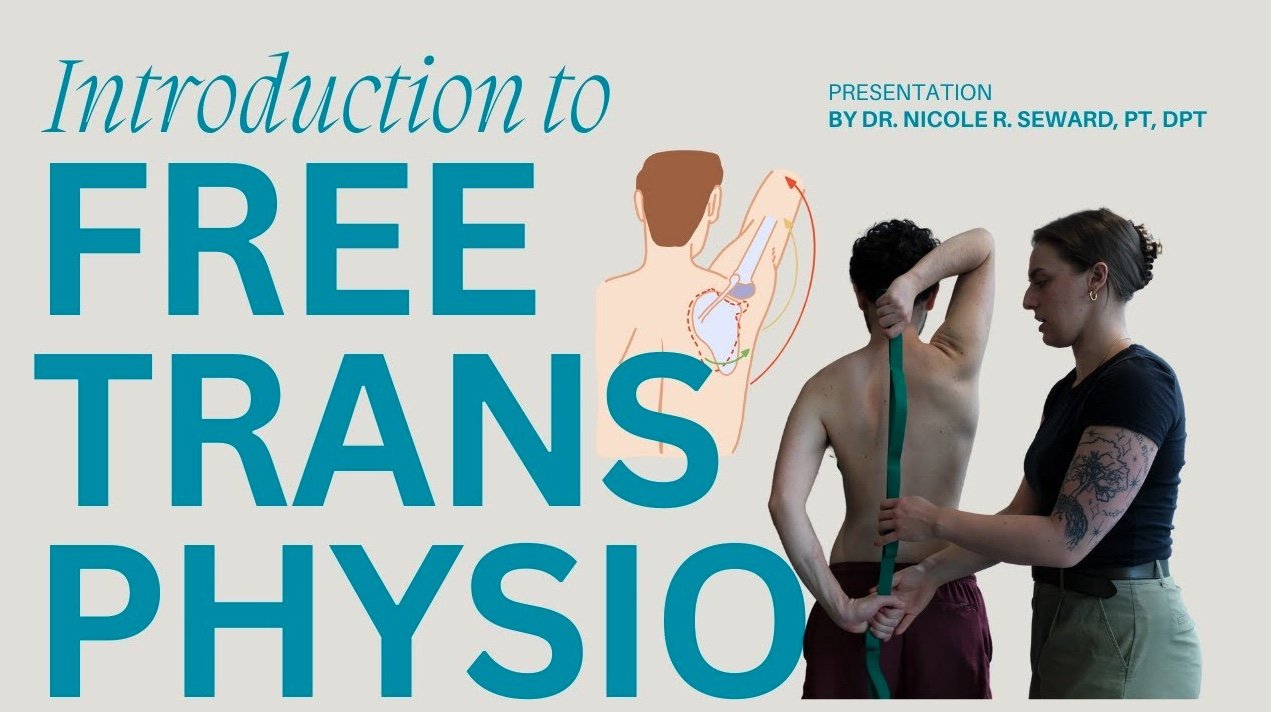Because trans bodies carry enough already…
“Injustice anywhere is a threat to justice everywhere. We are caught in an inescapable network of mutuality, tied in a single garment of destiny. Whatever affects one directly, affects all indirectly.”
— Martin Luther King Jr.
In physical therapy, we often talk about chains—kinetic chains, fascial lines, interconnected systems. But what we don’t talk about enough is the broader human chain. The one that links us in our shared humanity, and in our responsibility to each other.
If you're in the business of helping people move better, you are also—whether you realize it or not—in the business of justice.
Trans individuals face daily barriers not only to healthcare access, but to simply existing comfortably in their own bodies. As physical therapists, we’re in a unique position to address a piece of that discomfort—not just by treating symptoms, but by understanding the deeper systems at play.
From chest binding to the lived experience of body dysphoria, there are many factors that influence how trans people move through the world—literally and figuratively. These adaptations can lead to muscular imbalances, dysfunctional movement patterns, and chronic discomfort, especially in the chest, spine, neck, shoulders, and shoulder blades. And when these patterns go unaddressed, they’re only made worse by added physical stress, whether that’s from lifting, daily activities, or gender-affirming surgeries.
To build real change, we start with understanding. Not just of anatomy—but of context. Of lived experience. Because what we don’t understand, we can’t heal.
Many trans individuals are dissuaded from seeking physical therapy—or any form of healthcare—because of past experiences marked by dismissal, misgendering, pathologizing, or outright harm. These are not isolated incidents; they are systemic patterns that have made many trans people understandably cautious about entering a clinic at all.
This means that by the time a trans patient walks through your door, they’ve already overcome barriers that have nothing to do with anatomy. Our job—our responsibility—is to meet that courage with presence, safety, and accessibility before we offer any intervention.
This doesn’t just mean asking pronouns at intake (though, yes, please do that). It means structuring your entire care model around trust: making space for choice, consent, and collaboration at every step. It means understanding that your tone, your environment, and your ability to truly listen matter—sometimes more than the exercises themselves.
Before we become providers, we must become safe people. Because if someone doesn’t feel safe in their body or in your clinic, your treatment plan won’t matter.
We only then get the opportunity to help trans individuals reconnect with movement in these often-dysphoric areas of their bodies. We help restore mobility, improve proprioception, and create space—literally and emotionally—for their bodies to move without bracing or restriction. Then, we reinforce those new patterns with strength. Not just because strong is good (although it is), but because strength gives us back what dysphoria and chronic tension take away: autonomy, confidence, and function.
This is how we move beyond just treating pain. We build systems of support—inside the body and within the healthcare field—that recognize and respect the specific needs of trans people.
Because injustice in the body is still injustice. And when we help one person feel more at home in their body, we contribute to a larger, more just system—for everyone.
_________________________________________________
For those looking to dive deeper, I’ve created a video resource for physical therapists and healthcare professionals working with trans and non-binary individuals preparing for top surgery. It covers prehab strategies, post-op considerations, and how to approach care with clinical and cultural sensitivity.
Whether you’re a clinician, student, or just someone eager learn more—this is a great place to start.
For a look at the completely free patient guide to top surgery pre-habilitation we wrote over the past 2 years, see more info on the Free Trans Physio Project below.


